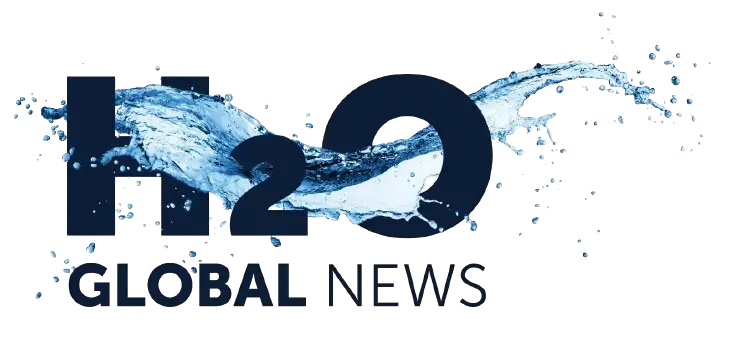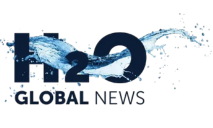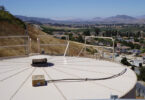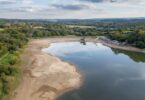We spoke to Dr. Tasrina Choudhury, our cover feature this month, about her remarkable journey in environmental science. Growing up in Bangladesh, where rivers and coastal ecosystems are central to life, she witnessed firsthand how pollution and industrialisation were degrading these vital water systems. This curiosity turned into concern as she learned about invisible threats in water systems and their impacts on ecosystems and human health.
After completing her education in Applied Chemistry and Chemical Engineering from the University of Dhaka, she joined the Bangladesh Atomic Energy Commission as a scientist. Her work is driven by the belief that clean water is a fundamental right, and science can provide the tools to protect it for future generations.
How have your international experiences shaped your research approach?
I have participated in many international trainings and workshops across Europe, Asia, and the Pacific, strengthening my expertise in nuclear and isotopic techniques, environmental monitoring, water quality analysis, and laboratory quality assurance. From advanced instrumentation training in France to marine ecosystem workshops in Monaco, isotope hydrology workshop in New Zealand, and capacity-building programs in China, Australia, and Slovenia, my global experiences have shaped my research approach and leadership in water quality technology and environmental science.
What do your studies reveal about contamination in Bangladesh’s coastal waters?
My research explores the growing threats of heavy metal and microplastic contamination in Bangladesh’s coastal and river systems. We have investigated pollution hotspots from shipbreaking yards, industrial zones, and agricultural runoffs using advanced techniques like ICP-MS, ICP-OES, FAAS, GF-AAS, HGAAS, CV-AAS and risk assessment modelling.
Studies on rivers including the Halda, Naf, Karnaphuli, Padma, and Meghna, as well as Sandwip Island, Patenga Coast, and the Bay of Bengal coast, revealed that toxic metals, particularly arsenic, lead, cadmium, and chromium, often exceed national and international safety limits. These industrial effluents and shipbreaking activities pose significant ecological and human health risks through drinking water and fish consumption.
We also assessed microplastic pollution in coastal sediments, river water, and sea salts, finding widespread contamination in beaches like Kuakata and Karnaphuli, signalling potential long-term health hazards. Our research calls for stricter pollution control, artificial mangrove plantations to trap contaminants, improved wastewater treatment, and public awareness campaigns.
Please tell us about your innovative water purification technologies
My research focuses on developing affordable, high-efficiency water purification technologies to tackle arsenic contamination, one of the most severe drinking water challenges in Bangladesh and beyond. Using locally available waste materials, I’ve developed several innovative adsorbent systems.
Our most successful approach uses Nanostructured Bi-Metallic Biochar made from sugarcane bagasse waste, impregnated with manganese and aluminium. This material achieved nearly 90% removal of arsenic in just over an hour, with a maximum adsorption capacity of 54.95 mg/g, outperforming many conventional adsorbents. The system works through oxidation and complexation via •OH free radicals, making it both efficient and environmentally sustainable.
These materials are easy to produce and scalable, offering practical solutions for household-level water treatment in arsenic-affected regions. Our work combines nanotechnology, waste valorisation, and green chemistry to design next-generation water purification technologies.
What are the most critical water contaminants in developing regions today?
The most critical water contaminants threatening communities in Bangladesh and many developing regions fall into four major categories:
- Heavy Metals: Arsenic remains the most alarming, affecting millions who rely on shallow tube wells. Lead, cadmium, chromium, and mercury from industrial sources cause cancer, kidney damage, and developmental disorders.
- Microplastics: Increasingly detected in surface water, sediments, and even sea salts from urban waste and industrial discharges, with unknown long-term health impacts.
- Nutrients & Agricultural Runoff: Excess nitrogen and phosphorus cause eutrophication, leading to harmful algal blooms and ecosystem collapse.
- Pathogenic Microorganisms: Bacterial contamination from untreated sewage leads to waterborne diseases like cholera and diarrhoea.
These contaminants create a complex crisis demanding integrated solutions, including pollution control, wastewater treatment, and affordable purification technologies.
How do you use local materials for sustainable water treatment?
My research turns locally available, inexpensive materials into advanced nanomaterials for sustainable water purification. For instance, we used tamarind pulp extract to synthesise magnesium oxide nanoparticles through an eco-friendly route, showing excellent efficiency for removing chromium and arsenic from contaminated water.
Similarly, we’ve developed sawdust-supported nano zero-valent iron, duckweed-based bioadsorbents, and graphene oxide composites. These materials demonstrate high adsorption capacities, reusability, and cost-effectiveness for household-level treatment in resource-limited regions. By using agricultural and industrial waste materials, our work promotes waste valorisation and directly addresses UN Sustainable Development Goal 6.
What does ISO/IEC 17025 certification mean for water quality testing?
My laboratory is accredited under ISO/IEC 17025 for heavy metals testing in water, soil, sediment, fish, and food products. This involves creating a robust quality management system, validating analytical methods, maintaining calibrated instruments, and implementing strict quality control measures.
For water quality testing, this certification ensures test results are accurate, reproducible, and traceable to international standards. In practical terms, communities, industries, and environmental agencies can rely on our data to assess contaminants because the results are scientifically defensible and globally comparable, strengthening public health decisions and pollution control measures.
How are you advancing trace metal analysis for developing world applications?
My work focuses on advancing analytical methodologies for detecting trace and toxic metals in water systems using state-of-the-art techniques like AAS, ICP-OES, and ICP-MS with optimised sample preparation protocols.
What makes our approaches particularly suited for developing world applications is that we modify methods to minimise expensive reagents while maintaining accuracy. Our techniques work in settings with limited infrastructure while meeting international quality standards. We also explore field-deployable methods for faster decision-making in remote areas.
Why is open access crucial for environmental science?
Open access publishing removes barriers to information, allowing scientists, policymakers, and communities in developing regions to access the latest findings without subscription costs. Water contamination is a global challenge, and unrestricted access to research enables faster adoption of evidence-based solutions and better-informed public policies.
Open access democratises environmental science, empowering local researchers, students, and NGOs to participate in solving pressing environmental issues. It ensures that critical data on contaminants reaches the people who can use it to protect public health and ecosystems.
What obstacles have you faced as a woman scientist from a developing country?
As a woman scientist from a developing country, I’ve faced challenges including limited research funding, resource-constrained laboratories, and fewer networking opportunities. Balancing motherhood with a demanding research career has been particularly difficult with two young children and limited childcare facilities.
I’ve navigated these challenges through family support, careful planning, and resilience, while leveraging local materials for research and forming collaborations with international organisations like the IAEA, TWAS, World Bank, and UNIDO. By combining innovation, resourcefulness, and strong support networks, I’ve conducted meaningful research that is both globally relevant and locally impactful.
What advice would you give young women aspiring to careers in environmental science?
Pursue your curiosity fearlessly and seek hands-on experience in environmental science. Build a strong foundation in chemistry, biology, and environmental engineering, complemented by practical laboratory and fieldwork skills. Networking and mentorship are equally important. Connect with scientists, participate in workshops, and seek collaborations to broaden your perspective.
Don’t be afraid to innovate using local solutions, because impactful research doesn’t always require expensive equipment. Above all, believe that your work can make a difference in communities, influence policy, and create positive change. Persistence, creativity, and collaboration are key to building a successful career in environmental science.
What’s your vision for water technology in developing nations?
My vision is to create affordable, sustainable, and community-centred solutions that can be widely implemented in resource-limited areas through locally sourced purification technologies that are easy to use and scalable.
We need to integrate scientific research with local knowledge, provide training programs, and promote partnerships between governments, NGOs, and international organisations. Open access to research, technology transfer, and supportive policies are key to ensuring that safe, clean water becomes a right rather than a privilege, empowering communities while protecting the environment.







